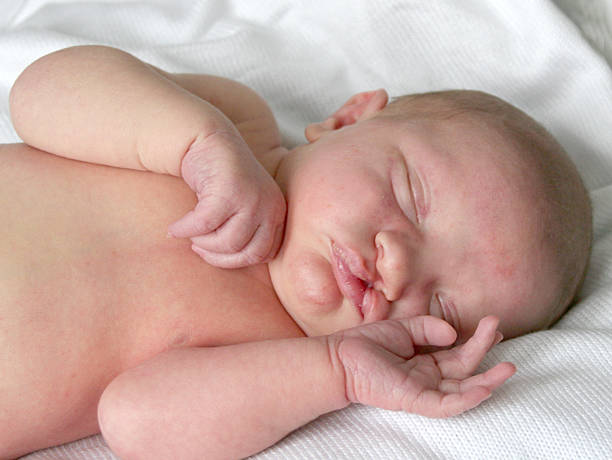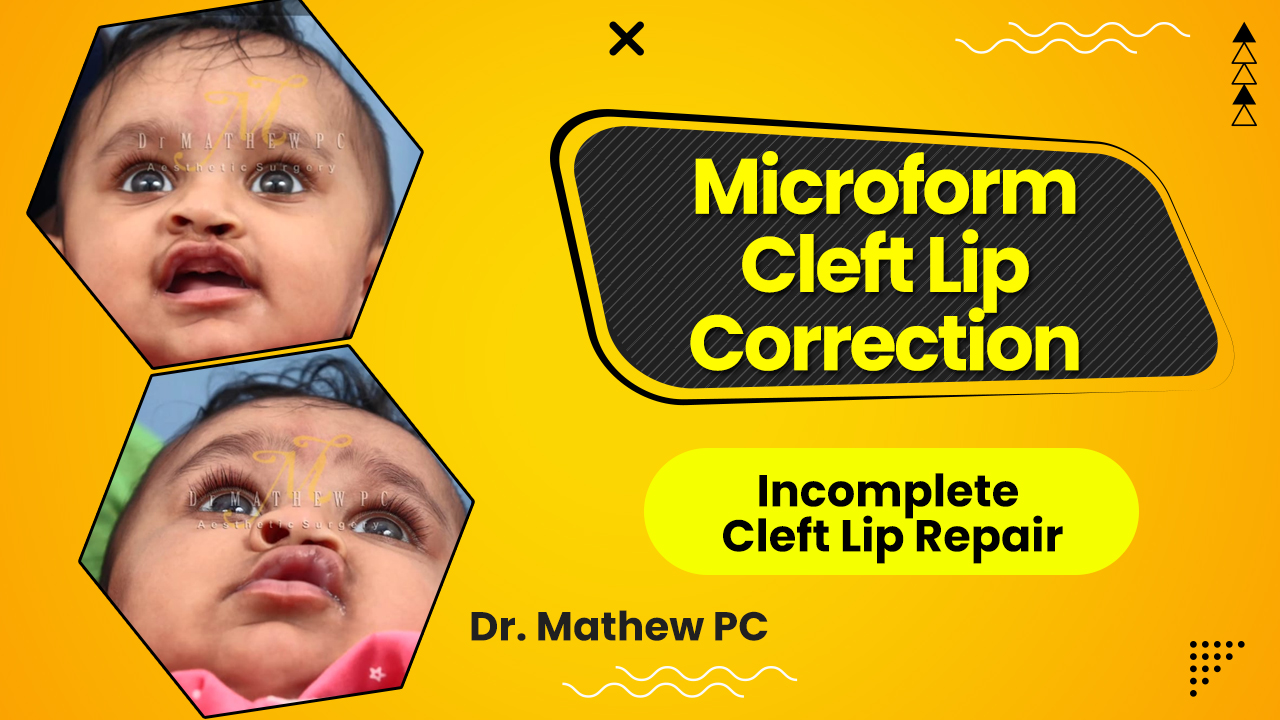Microform Cleft Lip – An Incomplete Cleft Lip | Best Cleft Lip Surgery
Get superior microform cleft lip surgery in India with St Thomas Hospital's expert team. Transform lives with skilled, compassionate care.

A mild form of cleft lip is microform cleft lip, which appears as small as a little dent in the vermilion or looks like a “scar” from the lip up to the nostril. Owing to aesthetic and functional needs, most microform cleft lip cases need reconstructive surgery. Microform cleft lip surgery in India is done to improve the aesthetics of a person’s face and also help in speech development.
The microform cleft occurs due to either failure of fusion at the second or third month of pregnancy, which leads to a separation between two facial bones. The severity and appearance vary from case to case depending on the size of the microform cleft and whether it occurs in one or both lips. The microform cleft is not visible to an observer when a person smiles but can be noticed only when the mouth remains closed. Microforms are most commonly seen along with microtia (missing ear), which happens due to incomplete development of the outer ear.
Cleft Lip and Palate
The uneven fusion of facial tissues during pregnancy results in a cleft lip and/or palate. The presence of a gap or crack in the lip and/or palate at birth is used to diagnose patients. This defect can have a significant breadth of severity. In about 1 out every 1000 births, cleft lip and/or palate occurs.
Cleft lip and cleft palate can manifest themselves in a variety of ways. The most frequent is cleft lip and palate (46 per cent), followed by isolated cleFT palate (33%) and isolated cleFT lip (21%).
Causes & Risk Factors
Smoking, especially in the second and third trimesters of pregnancy, has been linked to cleft lip and palate. Asians have a greater chance of having cleft lip and palate.
A family history of cleft lip and/or palate raises the risk of cleft lip and/or palate. If a parent or sibling has a cleft lip and palate, there is a 4% chance that your following child will have it. The likelihood of a third kid having cleft lip and palate if two siblings have it is 9%. The possibility of a subsequent baby being born with cleft lip and palate is 17% if the parent and youngster have cleft lip and palate. The danger of having another pregnancy with an isolated cleft palate for one affected kid is 2%, but it increases to 6% if the parent had a cleft palate.
About Microform Cleft Lip
The rate of microform cleft lip birth has not been determined. Microform was present in 9.2% of 360 cases (33 of them) of unilateral incomplete cleft lips in my series. Mini-microform clefts made up about one-third of these (3% of unilateral incomplete cleft lips).
These little flaws are frequently overlooked or given little attention by the neonatalogist or paediatrician attending the nursery. Parents are frequently advised not to be concerned since this minor birth defect is barely perceptible. They’re told that the fault will improve with time, but a minor operation may be required if necessary when the kid is older. As a result, seeing a plastic surgeon for the first time is commonly postponed.
The typical age of presentation is 11 months (range, 2 weeks to 9 years), with neonatal specialists and paediatricians being aware that a child with a microform cleft lip should be seen as soon as possible. Referring physicians should be aware that a labial scar incurred in childhood or adulthood is generally more obvious than one induced during infancy.
A surgeon who is solely focused on restoring a complete cleft lip or cleft palate may miss a contralateral microform or mini-microform. A contralateral microform cleft lip or mini-microform was observed in 4% of unilateral incomplete clefts and 2.5% of unilocularcleft lips in my patients with unilateral clefts, according to a retrospective study. If these contralateral cases were included in demographic studies, the actual incidence of bilateral labial clefting would be higher than what is currently reported.
ANATOMIC ABNORMALITIES
Mucocutaneous
The following features distinguish an infantile microform cleft lip: (1) a minor nasal deformity, (2) a philtral groove, (3) an indented free mucosal margin, and (4) a notched vermilion-cutaneous junction with the disruption extending upward less than one fourth of labial height. Other labial anomalies include a reduced median vermilion and a glabrous strip that runs from just above the Cupid’s bow peak to halfway up the lip. Although all three segments of the white roll are disrupted, it is well-formed in both medial and lateral compartments.
Muscular
In the microform cleft lip, the orbicularis oris muscular ring is incompletely developed; it has been described as either misaligned or fibrotic. Stenström and Thilander noted that the pars Alaris of the nasalis muscle is hypoplastic, and this might explain the laterally displaced alar base. The philtral ridge is often subtle; however, occasionally, the medial aspect of the escarpment rises excessively. A particular indication is when a furrow appears just lateral to the philtral ridgeline as the youngster puckers his or her lips.
Nasal
The nasal deformity is usually more apparent in a microform than the labial abnormality, although it is rarely as obvious as the nose distortion seen in an incomplete cleft lip. The nasal tip is slightly flat, the nostril rim is somewhat drooped, the hemicolumellar length is nearly normal, the sill is sunken, and the alar base is displaced laterally and slightly underrotated. As a consequence, the nostril axis on this side of the face runs transversely rather than parallel to that of a noncleft person.
Dentoalveolar
Because a microform cleft is the result of developmental problems in the primary palate, abnormalities in the teeth and alveoli are typical. These are:
•Deficiency of the bony framework around the lateral incisor
•The lateral incisor is abnormally big, odd-shaped, or positioned in an unusual manner.
•supernumerary tooth, distal to the lateral incisor
•Impaction of the canine
In the aforementioned studies, there was no greater incidence of dental abnormalities in relatives of kids with cleft lip or palate. Whether minor nasal asymmetries or dental anomalies are signs of a carrier state for cleft lip or palate is unknown. Nonetheless, for genetic counselling and molecular research, finding a chance of microform in the parents and siblings of the kid with a visible cleft lip or palate is critical. Three cases have been documented in which a tiny alveolar cleft was associated with an incomplete alveolar cleft and/or velar cleft, or complete unilateral cleft of the secondary palate.
It’s important for those who have microform cleft to be aware of how it can impact their social life as well as their oral health. We provided information on microform cleft lip which should help you understand more about this rare but serious issue. If you or someone you know has been diagnosed with microform cleft, we recommend reaching out to our team of experts at St Thomas Hospital Malakkara. Our hospital provides the best cleft lip surgery in India.
microform cleft lip surgery is done in India at affordable prices by a team of experienced plastic surgeons. The surgery is typically performed when the child is about six months old and lasts around two hours.
After the surgery, there might be some swelling and bruising on the face which will go away gradually. The child can go back to school after a week or two. There is usually no need for any further follow-up surgery unless there are any problems with the healed microform cleft lip.


